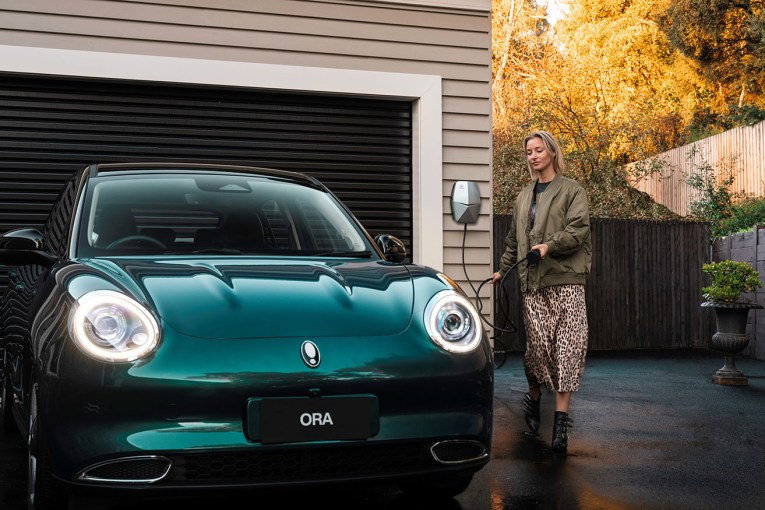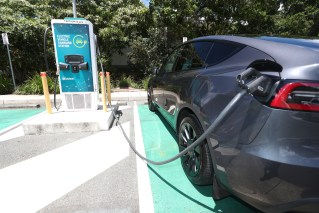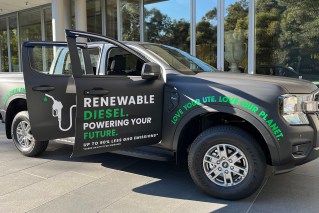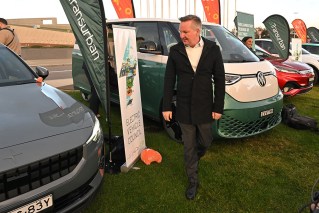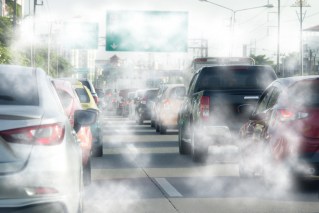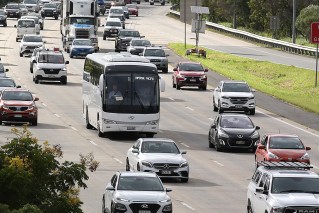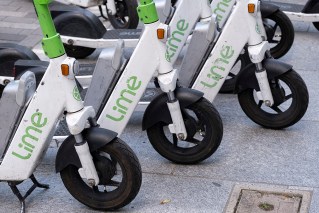Want to save fuel? Here are some top tips
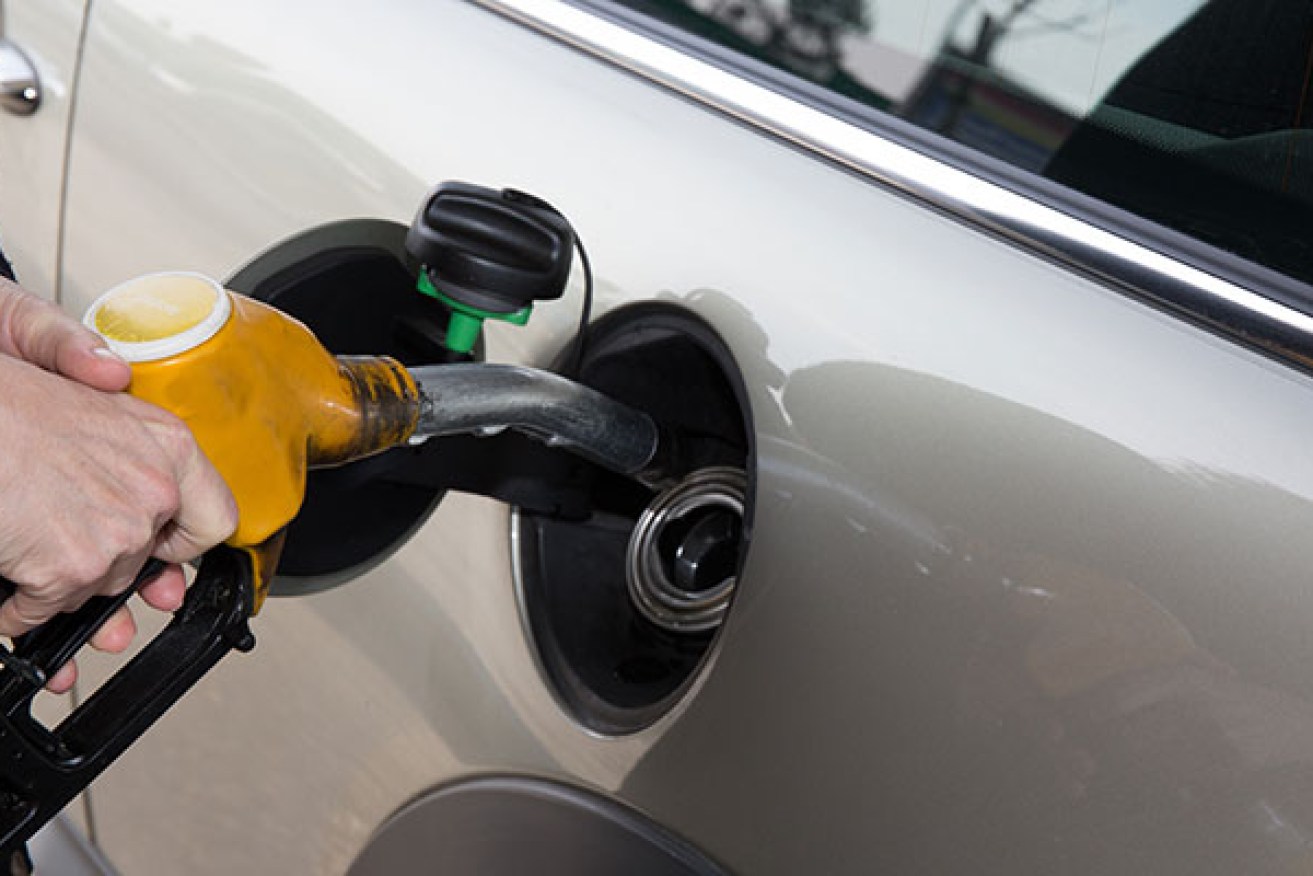
Fuel prices are on the rise again, but regardless of its price, you’d be foolish to waste it, especially when making the most of it is so easy to do.
Amazingly, most drivers seem to ignore the tips and techniques to save fuel. Whether it’s by lugging unnecessary weight or playing speed racer from every set of traffic lights, there are simple steps most of us forget … until it’s time to fill up.
With that in mind we’ve compiled 10 of the most straightforward tips for economic trips, most of which you can use today.
• This is what the future of Australian cars look like
• The 13 craziest cars from the Geneva Motor Show
Your owner’s manual can help
From selecting the right fuel, to maintaining the correct tyre pressure, to adhering to recommended service intervals, your owner’s manual is there to help.
All of the aforementioned points will help you conserve fuel, and all vary depending on your vehicle. It makes sense that manufacturers design vehicles to meet different parameters, and for different purposes. Your hatchback won’t need the same level of servicing as your neighbour’s four-wheel drive, but does require the appropriate fuel and tyre pressure to run at its optimum.
Like humans, a car cannot run at its best if it’s not in top shape. So take notice of the odometer, and service your car at its recommended intervals.
Study the map
The route you take to your destination plays a huge part in your fuel economy.
Taking the freeway will obviously result in a more economic drive than the surface streets crammed with traffic lights. Likewise a road that is straight and flat will see fewer prods at the throttle than ones that are hilly and twisty.
Sure, it’s not always possible to find an alternative, especially if your usual route isn’t serviced by freeways. But some lateral thinking – or the use of your sat-nav – could really help trim your fuel bill.
The black and rounds
If you’re really serious about saving fuel, the logical place to start is where rubber meets the road. A lot of tyre manufacturers now make compounds specially designed with economy in mind. Low rolling resistance tyres, as they’re known, typically have a higher silica content than regular tyres, and will coast further due to the decrease in friction between the tread and tarmac. (Visit www.tyresales.com.au for more information.)
It’s also worth noting that alloy wheels are lighter than conventional steel rims (which reduces your vehicle’s unsprung mass), but that thinner tyres offer less air resistance than the wider rubber usually found on that gleaming set of alloys.
Catch 22, perhaps?

Choosing a fuel-efficient car – unlike this one! – helps cut petrol use. Photo: Shutterstock
Clean up and save
A clean car mightn’t seem like the most obvious – or relevant – place to save fuel, but hear us out. Removing dirt and grime for your paintwork will make the car travel through the air more, err, cleanly. For the same reason you should also remove roof racks and bicycle carriers when they’re not in use. They’re heavy, and they catch the air.
Although that’s not the only cleanliness tip we can offer when it comes to saving fuel. The big one is what’s inside your car!
Cleaning out that change of clothes from last month’s soccer practice or emptying the junk from inside your boot will pay dividends at the pump. Remember, the less weight your car has to carry around the more efficiently it will operate. It’s exactly why vehicle manufacturers don’t fit full-size spare wheels these days…
Idle time is the enemy of economy
The more time your engine is running, the more fuel it uses. It sounds simple because it is, and it’s the very same reason many modern cars offer technology to switch the engine off when the car comes to a stop.
Of course without the bolstered starter motor this technology includes we can’t recommend manually turning your engine off each time you stop. But if you’re sitting waiting for the 4:28 freight train, the kids to get out of class or find yourself stuck gridlocked in traffic, switching the engine off is a great way to save fuel.
If you want to take things a step further, we also recommend shifting to neutral when stopped with the engine running. Resting the car on the torque converter, or riding the clutch, burns fuel and wears parts. So slip out of gear and save!
Eyes up, anticipate, and go with the flow
If you’re only watching as far ahead as the car in front of you, chances are you’re missing some pretty big steps toward saving fuel – and possibly heading towards a nose-to-tail accident!
Looking further ahead will allow you to choose a lane that is flowing more freely and also determine how quickly the traffic is moving. It stands to reason that the lane cruising at a constant speed is more efficient than one that is stopping and starting.
We also recommend leaving a larger gap between you and the car in front to reduce the number of inputs made on the pedals. Jumping on and off the brake and throttle really chews through the juice, so keep it smooth and you’ll reap the benefits.

Stop-start driving in heavy traffic eats up fuel. Photo: Shutterstock
Strong and constant
Applying the throttle more gently, taking a little longer to hit the speed limit, and using the cruise control are great ways to save fuel.
It’s also important to shift gears at lower engine speeds to minimise the fuel wasted between gears. Some manufacturers now offer a shift indicator (usually located adjacent the tacho or rev counter) to tell you the best time to shift up or down, while many automatic models now come with more gears to reduce the inertia the engine must overcome between ratios.
If your car isn’t that high-tech – and you don’t have a sliver of mechanical aptitude – the best advice we can give is to look through you owner’s manual (or research the stats at www.redbook.com.au) and find when your engine’s maximum torque value is exerted. If for example your engine develops 250Nm at 2200rpm, then this is the best time to change gears in order to conserve fuel. Going beyond this is simply wasteful … at least from an economic point of view.
Auxiliary measures
It stands to reason that the higher the parasitic drag on your engine, the more fuel it will use. But how does that translate to electrical ancillaries? And what about the air-conditioning?
The truth is that in newer cars many of the auxiliary systems draw power from the engine on demand. In other words, if you’re using it, it’s on. And if you’re not, it’s off. The declutching of your air-conditioning compressor or power steering is a great example.
If it’s a mild day, or the climate control says the cabin is dry enough not to need it, the air-conditioning pump simply won’t engage. Ditto the steering – which in the case of some new electrically-assisted designs shuts down when driving in a straight line.
Of course driving with every mod con switched on at once will sap power from the system, and in turn use more fuel. So, switch off or turn down the auxiliaries you can do without – except for the air-conditioning.
But don’t forget our old friend aerodynamic drag. Using the air-conditioning sensibly (that is, running it constantly at a modest temperature) is more economical than driving with your sunroof open, or your windows down.
The best idea is to open your roof and windows to allow hot air to escape, then closing them as you move off to allow the air-con to work its wonders. Or better still, park undercover.

Fuel costs are a substantial household expense. Photo: Shutterstock
Buying the right car
When you’re buying a new car there’s a lot to think about – and fuel economy is an important consideration. www.motoring.com.au, www.redbook.com.au and indeed most vehicle manufacturer websites offer an insight into which car is not only the most economical, but also right for you.
First, think carefully about how big. There’s no point driving that large SUV if you’re the only one in it. Choosing a smaller car for the time you spend commuting is a great idea, and will save you money to rent a bigger vehicle for those occasional trips away.
It’s also a great idea to look carefully at the ADR fuel economy placard on the window at the time of purchase. The numbers are like golf scores to cars – the lower they are, the more efficient the model is. That said, don’t expect to achieve the mileage that’s stated there – it’s a theoretical number achieved in the laboratory.
You should also consider just which type of engine best suits your needs. If you’re doing a lot of country miles, towing, or transporting the family (or a lot of weight), a turbo-diesel is a good choice for the longer term. However, if you only drive a short distance to work – and in a built-up area – a hybrid or electric vehicle may be a better consideration.
And of course, there’s also a range of petrol and turbo-petrol models with fuel-saving technology like idle stop-start to trim precious litres from your monthly fuel bill. It pays to do your homework.
Avoid the rush – and the weather
No one wants to sit in heavy traffic, and no one likes driving in adverse conditions – and neither does your engine.
Put simply, the best time to save fuel is when the roads are empty and the weather is fine. Get up early and beat the rush – or sleep-in and wait until it has past. Avoiding stop-start traffic is a great way to save fuel, and will also reduce the wear and tear on both your car and you.
It’s also worth noting that bad weather plays its part on fuel consumption too. Wet weather increase the rolling resistance between your tyres and the road, and means you’ll also be using more of those auxiliary items (lights, wipers, air-conditioning) we spoke of earlier. Likewise, windy weather can increase the aerodynamic drag on your car, and hot weather the strain on your tyres, engine and air-conditioning.
Of course, not driving at all will save even more money – just ask Joe Hockey.
If you don’t have to buy fuel, you won’t have to use it. So ride the bike or walk if it’s a quick trek to the local shops. It’s good for your health, the environment, and your hip pocket.
This article first appeared on motoring.com.au
